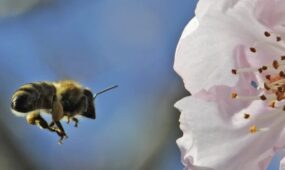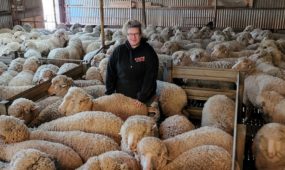Nanoparticles could be the future of agriculture
Primary Industries
MICROSCOPIC particles that have always been considered a pollutant are being studied for a range of agricultural uses.

Sign up to receive notifications about new stories in this category.
Thank you for subscribing to story notifications.
South Australian researchers are working on a number of novel uses for engineered nanoparticles including efficient fertilisers, agricultural ‘amendments’ and a unique way to clean-up contaminated land.
Engineered nanoparticles are currently used in a range of industrial materials, such as ceramics and advanced polymers, and are also commonly used in the production of household materials, personal care products and clothing.
These particles are considered a pollutant risk if they are able to accumulate in the environment.
With a maximum diameter of just 100 nanometres, it is easy for the particles to be widely dispersed across soil and accumulated by plants.
As a result, nanoparticles have been considered a pollutant and eco-toxicological risk to both plants and wildlife.
But researchers at the University of South Australia have found that the very same nanoparticles could also prove beneficial to the growth of plants.
A glasshouse trial conducted by Dr Elliott Duncan, Dr Gary Owens and Nazanin Nikoo Jamal involved exposing rice plants to titanioum and cerium nanoparticles.
Dr Elliott said that instead of proving toxic to the plants, the nanoparticles aided the growth of the rice plants.
Current laboratory tests have focused on rice plants, but Dr Duncan said the same particles could also be used to benefit other grain crops and horticultural species, with tests expected to begin on wheat later this year.
“There’s a lot of concern in terms of whether engineered nanoparticles are toxic, whether they’re accumulated by plants and what the end effect is for humans and the environment,” he said.
“But we found these particles may actually provide some benefits for the plants, and, if we could harness those, this could be a big deal for the agriculture industry.”
The experiment demonstrated that some nanoparticles had the potential to be used as an agricultural supplement, although Dr Duncan said it was still unclear how exactly these particles helped the growth of plants.
“The mechanisms behind it and predicting whether it is going to occur and how best to harness it is still unknown,” he said.
His team will continue with glasshouse experiments to test the safety and effect of the nanoparticles.
Dr Duncan said there was also the potential for specially designed nanoparticles to be used as a way to delivery fertiliser more efficiently.
“With current fertilisers, a lot of the nutrient isn’t available to the plants – essentially the plant can only use 30 to 50 per cent, so up to 70 per cent of the fertiliser expense is just wasted,” he said,
“The idea would be that if we can improve that, you can get away with applying a lot less, which then has benefits for the economics of the farm and the environment.
“This stems from the fact that the nanoparticles are small, which means they’re quite mobile in the environment so they should be able to interact with plants a lot better than more traditional bulk fertilisers.”
The size of nanoparticles also means they possess unique properties such as a high surface-area to volume ratio, which could also make them effective for cleaning up contaminated land.
Dr Duncan is also researching the effectiveness of nanoparticles in binding to toxic chemicals such as lead and arsenic.
“To remediate a site is often quite destructive, you cause quite a big change to the environment if you’ve got to say dig it up, it’s quite labour intensive and so on,” he said.
“So this could be a faster, simpler way to remediate a site than current technologies, so we want to see whether these particles can reduce the bio-availability of contaminants, which should reduce how much is available to plants and also how much is lost into water-sources.”
Dr Duncan said more understanding was still needed around the ease with which nanoparticles could move into soil, plants or wildlife, and that long-term toxicity was also an important safety factor to evaluate.
However, if his research continues to yield positive results, he said there was the potential for a commercial product for the agriculture industry.
“We need to do it in an Australian context to see how it’s going to potentially impact our industry,” Dr Duncan said.
“We’re aware that there are risks involved with nanoparticles, but the reward could also be great too.”
Jump to next article



